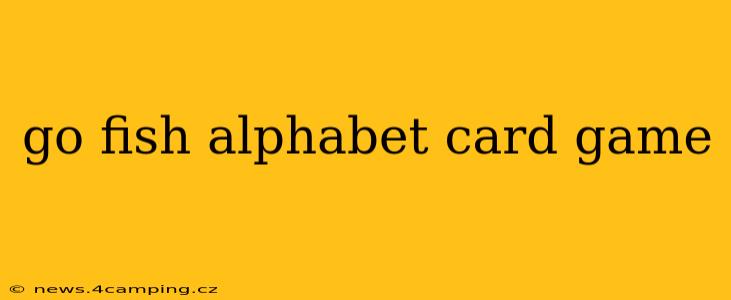Go Fish, a classic card game, is a fantastic way to engage children in learning and practicing their alphabet skills. This simple yet engaging game can be adapted to focus specifically on letter recognition, phonics, and even spelling. This guide explores how to play Go Fish with an alphabet twist, its benefits for kids, and variations to keep the learning fun and exciting.
What is Alphabet Go Fish?
Alphabet Go Fish is a variation of the traditional Go Fish card game. Instead of using numbered cards, you use alphabet cards—either commercially available alphabet card sets or homemade ones. Each player aims to collect pairs of matching letter cards. The game encourages children to recognize letters, learn their sounds, and improve their memory.
How to Play Alphabet Go Fish
Materials:
- A deck of alphabet cards (26 cards with each letter of the alphabet appearing twice). You can easily create your own using index cards or printable templates.
- At least two players.
Gameplay:
- Deal the cards: Shuffle the deck and deal seven cards to each player. Place the remaining cards face down in the center of the table to form the draw pile.
- Ask for a letter: Starting with the youngest player, each player takes a turn asking another player for a specific letter. For example, "Do you have any 'A's?"
- Responding to the request: If the asked player has the requested letter(s), they must give all matching cards to the asker. The asker then takes another turn.
- Saying "Go Fish": If the asked player does not have the requested letter, they say "Go Fish!" The asker must draw a card from the draw pile. If the drawn card matches the letter they were asking for, they get to keep the card and take another turn. If not, their turn ends.
- Making pairs: Throughout the game, players look for pairs of matching letters. When a player forms a pair, they set the pair aside.
- Winning the game: The game continues until all pairs are made. The player with the most pairs at the end wins!
Variations of Alphabet Go Fish
Several fun variations can boost the learning aspect:
Sound-Based Go Fish:
Instead of asking for a specific letter, players ask for a specific sound. For example, "Do you have any letters that make the /s/ sound?" This version focuses on phonics.
Spelling Go Fish:
This version introduces a spelling element. Players ask for letters to spell a word. For example, a player might ask, "Do you have a 'C' to spell 'cat'?" This variation is more suitable for older children with some spelling skills.
Go Fish with Upper and Lowercase Letters:
This version uses cards with both uppercase and lowercase letters to practice letter recognition in both forms. Children learn to match upper and lowercase versions of the same letter, strengthening their understanding of letter case.
What are the benefits of playing Alphabet Go Fish?
- Letter Recognition: Children develop their ability to recognize and differentiate between letters of the alphabet.
- Phonics: The sound-based variation strengthens phonics skills, connecting letters with their sounds.
- Memory Skills: The game improves memory as children remember which letters they have and which letters other players might possess.
- Turn-Taking and Social Skills: Children learn to take turns, follow rules, and interact positively with others.
- Fun and Engaging Learning: The game makes learning the alphabet fun and engaging, rather than a chore.
How can I make my own Alphabet Go Fish cards?
Creating your own cards is easy! Simply use index cards, construction paper, or printable templates. Write each letter of the alphabet twice on separate cards, making sure they are clearly visible and easily recognizable for your child. You can even decorate the cards with pictures or colors to make them more appealing.
This simple game offers a fun and effective way to engage young learners with the alphabet, enhancing their literacy skills while keeping them entertained. Remember to adapt the game to your child's age and skill level to maximize the learning experience.
